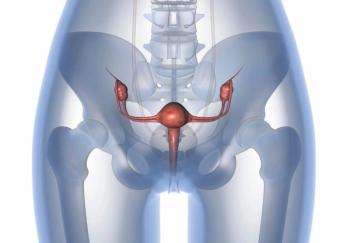
- ONCOLOGY Vol 19 No 4
- Volume 19
- Issue 4
Commentary (Gruber et al)-What the Physician Needs to Know About Lynch Syndrome: An Update
In many respects, Lynch syndromeserves as the paradigm of cancergenetic syndromes. It is relativelycommon and accounts for approximately3% to 5% of colorectal cancer cases.The genetic basis is clearly understood,and genetic testing is clinically availableand routinely incorporated intoclinical practice. Furthermore, the diagnosishas a profound impact on themanagement of individuals at risk, andinterventions have been shown tosubstantially reduce morbidity andmortality. These advances in our understandingare attributable, in largepart, to the seminal work of Dr. HenryLynch and his colleagues.[1-3]
In many respects, Lynch syndrome serves as the paradigm of cancer genetic syndromes. It is relatively common and accounts for approximately 3% to 5% of colorectal cancer cases. The genetic basis is clearly understood, and genetic testing is clinically available and routinely incorporated into clinical practice. Furthermore, the diagnosis has a profound impact on the management of individuals at risk, and interventions have been shown to substantially reduce morbidity and mortality. These advances in our understanding are attributable, in large part, to the seminal work of Dr. Henry Lynch and his colleagues.[1-3]
Dr. Lynch recognized that the hereditary cancer syndrome first described by Aldred Warthin in 1913[4] represented more than simply an interesting case report, leading to a sustained line of research over the past 40 years that has profoundly influenced the practice of cancer genetics. In their article in this issue, Lynch and Lynch retrace the fundamental principles of cancer genetics that help distinguish familial risk and hereditary colorectal cancer syndromes. Several important elements are highlighted that provide practical guidance to clinicians in recognizing inherited susceptibility to cancer, and the specific examples provided for Lynch syndrome provide a foundation for understanding the management of a plethora of cancer syndromes.
Hereditary Cancer: A Recognizable Phenotype?
By dichotomizing hereditary cancer syndromes into those with and without physical stigmata, the authors draw attention to the fact that some heritable cancer syndromes are accompanied by recognizable phenotypic attributes that permit a clinical diagnosis to be made without the benefit of molecular diagnostic testing. For example, the authors cite familial atypical multiple mole melanoma (FAMMM) syndrome and familial adenomatous polyposis (FAP) as clearly recognizable phenotypes. In contrast, hereditary breast-ovarian cancer syndrome and Lynch syndrome are grouped as disorders that lack phenotypic stigmata.
In some respects, this distinction is somewhat artificial, as Lynch syndrome can often be accompanied by dermatologic findings including sebaceous hyperplasia and sebaceous adenomas, and even some breast and ovarian cancer syndromes (such as Cowden syndrome and Peutz-Jeghers syndrome) are associated with readily apparent physical stigmata. However, the key principle raised by the authors is that a classic medical genetics approach that incorporates physical diagnosis into the practice of cancer genetics is often, but not always, helpful.
Genetic Testing as the Standard of Care
The pace of advances in molecular medicine has been astonishing, and it is remarkable that genetic testing for Lynch syndrome only became a reality a decade ago. Genetic testing has a profound impact on the clinical care of individuals at risk of Lynch syndrome, and several studies have demonstrated the cost-effectiveness and utility of genetic testing in different contexts.[5,6] Indeed, it is now routine for some hospitals to screen all patients diagnosed with colorectal cancer under age 50 for microsatellite instability in an effort to identify patients and families with Lynch syndrome. Furthermore, genetic testing can now be guided by immunohistochemistry, determining which protein is not expressed in order to focus on the gene that is most likely to be mutated.
One element that the authors review in detail is the genetic heterogeneity accounting for Lynch syndrome. Genetic heterogeneity simply refers to the concept that one disease (Lynch syndrome) may be caused by mutations in more than one gene (hMSH2, hMLH1, hMSH6, etc). In their discussion of founder mutations, the authors note that genetic testing strategies may benefit from tailoring the testing to the population at risk. For example, in Newfoundland, genetic testing for Lynch syndrome should clearly begin by simply looking for the known founder mutation. This approach may also be useful in founder populations such as the Ashkenazi Jews, among whom several founder mutations have been described.[7-9]
Importance of Genetic Counseling
Genetic testing makes a profound difference in the care of families with an identifiable mutation in a mismatch repair gene, but testing does not always lead to a confirmed molecular diagnosis. In fact, many patients and families benefit from genetic counseling without even pursuing genetic testing. Genetic counseling focuses on risk assessment and can often provide precise estimates of probabilities of carrying a mutation or developing disease. In addition, Lynch and Lynch highlight the psychosocial support provided by genetic counselors. The authors appropriately emphasize the "absolute necessity" of genetic counseling before and after testing; such counseling is critical to the care and management of patients and families at risk for hereditary cancer.
Diagnostic Criteria
Genetic counseling can also assist in the diagnostic work-up, since the first element of a genetic intake is a detailed family history. Here, the authors highlight the importance and potential pitfalls of the family history in making a diagnosis of Lynch syndrome and summarize the history of the diagnostic criteria, as well as the guidelines for pursuing a molecular diagnostic work-up. Lynch syndrome is clearly underappreciated in clinical practice, and greater awareness of the features that are suggestive of hereditary cancer syndromes will permit improved implementation of strategies that reduce risk.
Strategies to Reduce the Risk of Cancer
Perhaps the most important contribution of the article by Lynch and Lynch is the overview of strategies to reduce the risk of cancer. By providing detailed recommendations regarding the risk of colorectal and endometrial cancer, the authors highlight the key elements for the two most common cancers in Lynch syndrome. Although the authors do not systematically review all of the options, ie, surveillance, chemoprevention, risk-reducing (prophylactic) surgery, the principles of targeting prevention to those individuals at highest risk are articulated clearly. Clinicians should also be aware that oral contraceptives are often recommended to premenopausal women at high risk, since epidemiologic data show that oral contraceptives are associated with meaningful reductions in the risk of endometrial cancer and ovarian cancer.[9,10] In addition, chemoprevention trials for colorectal cancer in Lynch syndrome are under way, and hold promise for the future.
Summary
Lynch syndrome provides a paradigm for understanding the history, molecular diagnosis, and management of cancer genetic syndromes in clinical practice. Although Lynch syndrome has been described by several names over the past 40 years, alternative names like hereditary nonpolyposis colorectal cancer are misleadingly restrictive and fail to recognize the lifelong achievement of Dr. Henry Lynch and his colleagues in elucidating the clinical, epidemiologic, and molecular features of this important syndrome.
Financial Disclosure: The authors have no significant financial interest or other relationship with the manufacturers of any products or providers of any service mentioned in this article.
References:
1. Lynch HT, Shaw MW, Magnuson CW, et al: Hereditary factors in cancer: Study of two large midwestern kindreds. Arch Int Med 117:206-212, 1966.
2. Lynch HT, Krush AJ: Cancer family “G” revisited: 1895-1970. Cancer 27:1505-1511, 1971.
3. Lynch HT, Lynch JF: 25 years of HNPCC. Anticancer Res 14:1617-1624, 1994.
4. Warthin AS: Heredity With Reference to Carcinomas Shown by the Study of the Cases Examined in the Pathological Laboratory of The University Of Michigan, pp 546-555. Ann Arbor, Mich, 1913.
5. Ramsey SD, Clarke L, Etzioni R, et al: Cost-effectiveness of microsatellite instability screening as a method for detecting hereditary nonpolyposis colorectal cancer. Ann Intern Med 135:577-588, 2001.
6. Cromwell DM, Moore RM, Brensinger JD, et al: Cost analysis of alternative approaches to colorectal screening in familial adenomatous polyposis. Gastroenterology 114:893-901, 1998.
7. Foulkes WD, Thiffault I, Gruber SB, et al: The founder mutation MSH2*1906G->C is an important cause of hereditary nonpolyposis colorectal cancer in the Ashkenazi Jewish population. Am J Hum Genet 71:1395- 1412, 2002.
8. Lipkin SM, Rozek LS, Rennert G, et al: The MLH1 D132H variant is associated with susceptibility to sporadic colorectal cancer. Nat Genet 36:694-699, 2004.
9. Combination oral contraceptive use and the risk of endometrial cancer. The Cancer and Steroid Hormone Study of the Centers for Disease Control and the National Institute of Child Health and Human Development. JAMA 257:796-800, 1987.
10. Bosetti C, Negri E, Trichopoulos D, et al: Long-term effects of oral contraceptives on ovarian cancer risk. Int J Cancer 102:262-265, 2002.
Articles in this issue
over 20 years ago
Integrated PET-CT: Evidence-Based Review of Oncology Indicationsover 20 years ago
What the Physician Needs to Know About Lynch Syndrome: An Updateover 20 years ago
Integrated PET-CT: Evidence-Based Review of Oncology IndicationsNewsletter
Stay up to date on recent advances in the multidisciplinary approach to cancer.



















































































